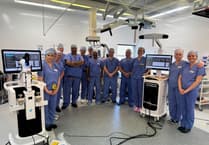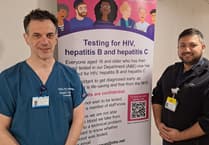The big event this week was the Queen’s Speech at the opening of parliament. It is an occasion with a curious mix of pomp and informality, not least with MPs packed like sardines at the back of the House of Lords. This year of course that was rather changed because of the pandemic.
In my experience Queen’s Speeches have little detail about what governments plan to do – but lots of clues.
There is little detail because of that catch-all phrase at the end about bringing forward ‘other’ legislation which means a government’s hands are not tied by the list recited by Her Majesty.
But the clues are very important because governments use the focus on their legislative agenda to spell out their priorities – and Boris Johnson has done that very clearly.
Let me focus today on one of those priorities: the very support that will be given to the NHS to deal with the backlog of operations following Covid.
We know sadly that in the early stages of the pandemic there was one additional death caused by the interruption to regular NHS services for every Covid death.
Cancer was one of the biggest areas of concern, with a 31 per cent drop in chemotherapy attendances, a 14 per cent decline in radiotherapy procedures and a 29 to 40 per cent decrease in surgical operations during the past year.
This really matters because cancer is a disease where time can be critical: picking up a cancer at stage one or two can make all the difference to a successful outcome.
So it is good news the government is focusing on this issue – and I am doing the same locally. I have launched a major campaign to help boost the provision of cancer services locally, including raising funds for a new cancer ward at the Royal Surrey.
I am also working with the local NHS to boost awareness of the importance of being up to date with cancer scans and screening.
The NHS has a national ambition to boost the number of cancers we pick up early to around three-quarters of the total – up from around half at the moment.
I want South West Surrey to be in the vanguard of that vital change. I will therefore be hosting a public meeting on the issue with local NHS leaders on Friday, July 2. If you would like to attend (virtually or in person) please do drop me an email.
But there is a broader point to be made about the government’s efforts to tackle the backlog. Additional funding is important – and indeed necessary. But unless you have additional doctors and nurses to employ with that extra funding, it won’t make the difference we need.
It takes seven years to train a doctor and three years to train a nurse. If there is one thing I learned during my time as health secretary it is the critical importance of workforce planning.
I set up five new medical schools and increased doctor, nurse and midwife training places by a quarter, one of the biggest ever increases – recruiting an extra 40,000 clinicians, including 14,000 more nurses, by the time I left.
But with workforce shortages persisting across most specialties I still worry we do not have a rigorous system to make sure we are training enough doctors and nurses.
The government is planning a Bill to reform NHS structures which has widespread support.
This is surely then the moment to make it the statutory responsibility of Health Education England to publish annual ten- and 20-year workforce projections across every speciality in both health and social care so we can make sure we really are training enough clinicians for the future.
We owe so much to our brilliant health and care staff after the past year – and they know workforce shortages cannot be solved overnight.
But we can at least give them the comfort of knowing that long-term planning is in place to relieve the pressures they face.




